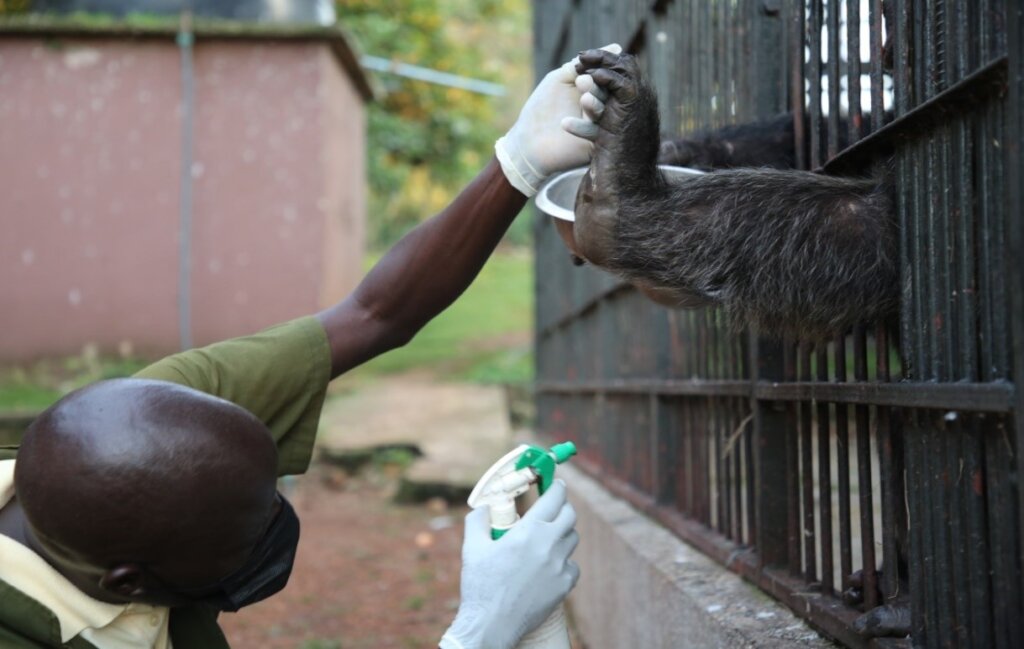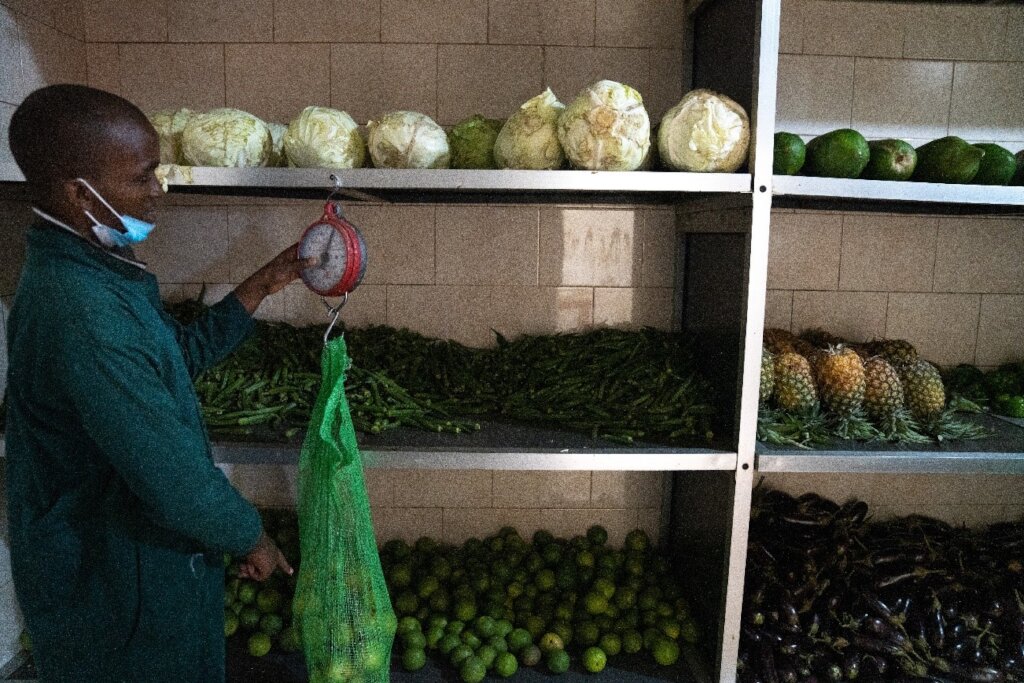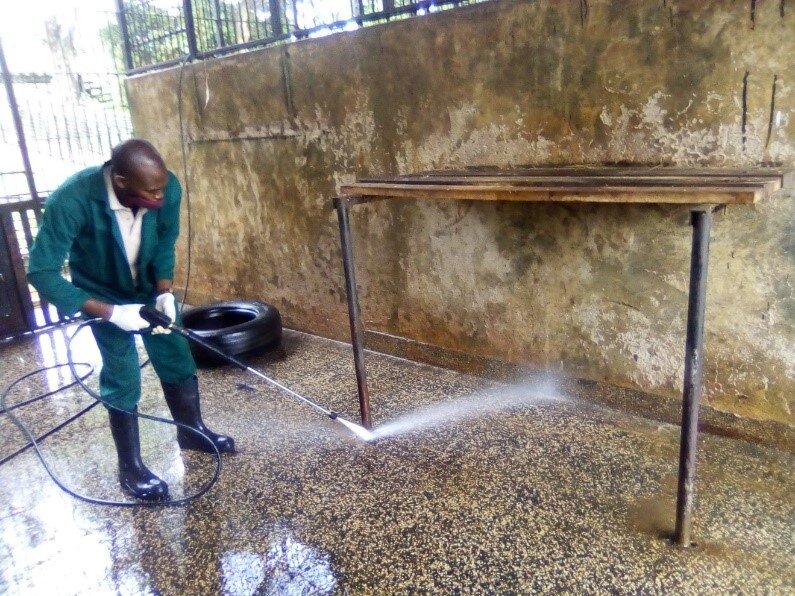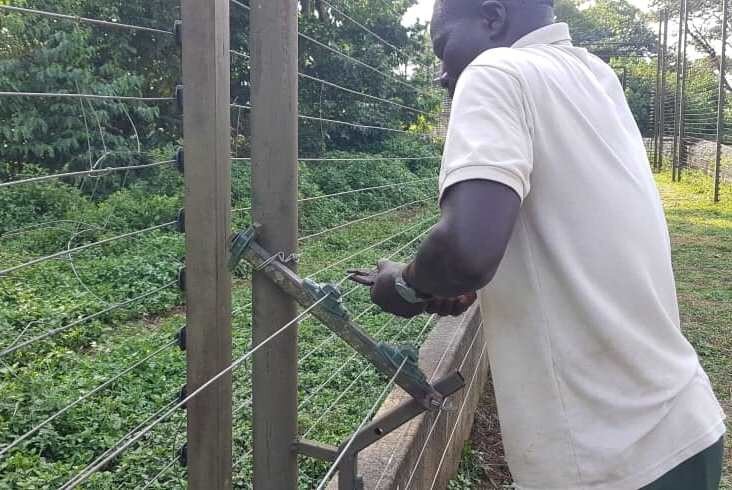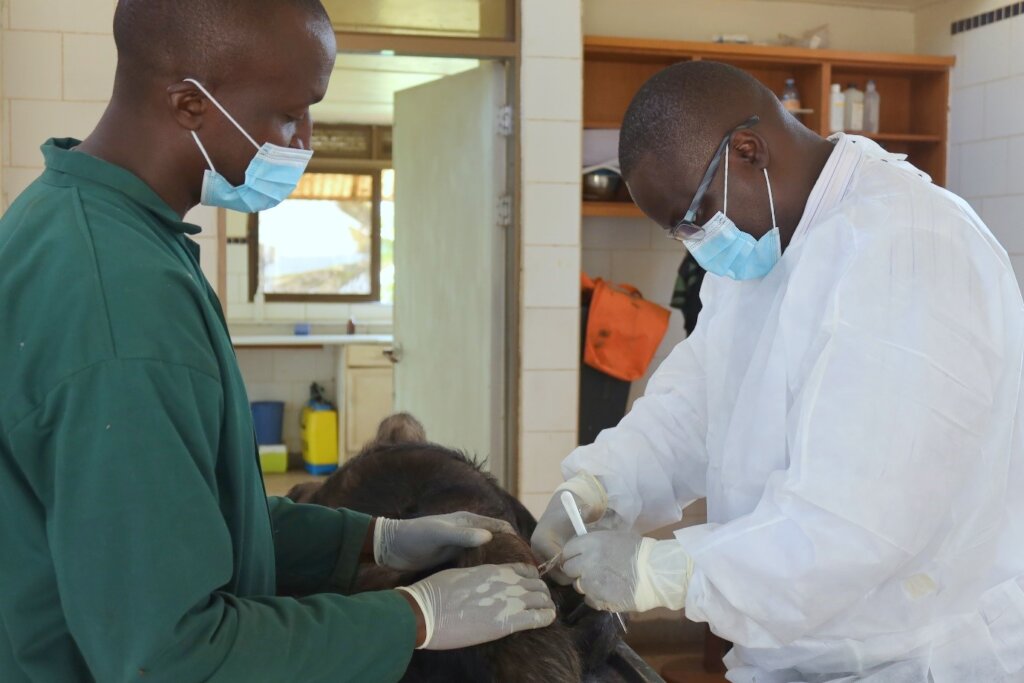![Photo: Students reading Sunday's book]()
Photo: Students reading Sunday's book
Through the continued support from generous individual donors who donate through GlobalGiving and other platforms, the Trust has been able to provide the best possible welfare to the 52 chimpanzees at Ngamba Island, by providing feeding, veterinary care and infrustructure. The Trust has also been able to maintain conservation efforts to monitor our efforts to restore chimpanzee habitat in western Uganda. Last quarter, over 50,000 tree seedlings of indegenous species in partnership with collaborating farmers. The Trust has monitored the performance of these seedlings registering an 80% survival rate todate. Our education program has distributed 10,000 children's books to over 200 schools to promote environmental education and increase awareness on the plight of the wildlife in general and chimpanzees in particular, in Uganda.
How the funds received through GlobalGiving were used
1.0 Welfare for the Chimpanzees at Ngamba Island sanctuary
The funds raised were used for the procurement and transportation of food for the 52 chimpanzees. The chimpanzees have adapted to a revised menu, launched in January 2022. We offer supplementary feeding to the chimpanzees, 4 times; including fruits, vegetables, roots, grains and supplementary minerals as a carefully balanced diet using readily available food in Uganda. Food is sourced from local communities and supplied farm-fresh every 10 days. The chimpanzees also need enrichment and this is provided using a daily enrichment schedule that includes the use of feeding puzzles, an artificial termite mound, ice treats, etc. Honey, peanuts or peanut jelly, sunflower and other seeds are used to seed the enrichment equipment, especially for the chimps that stay indoors.
Over the last quarter, we have also installed new hammocks to replace the old tattered ones in the chimpanzees sleeping den. The hammocks provide a ‘nest’ above ground as they would use in the wild The chimpanzees line these nests with hay, as they would with leaves in the wild, thus maintaining natural behaviour.
2.0 Veterinary care
Routine daily health monitoring for the 52 chimpanzees has been done with the help of animal caregivers. Minor injuries were treated and more severe cases are managed by the veterinarian who is also the sanctuary manager. We have not had any major cases, except a few that needed stitching for deep cuts and wounds and others that needed medication over short periods.
The Chimpanzee Trust conducts annual health examinations on its chimpanzees every year. This year’s annual chimpanzee health examinations were conducted in the month of July. These routine annual health examinations involved a full physical and clinical exam for all the chimpanzees. Physical assessments as well as screening of blood and other samples collected, was done to assess the health status of the chimpanzees. From the recently completed health checks, all the chimpanzees had a clean health bill. A summary report will be available on our website in a few weeks.
3.0 Routine Maintenance
Maintenance of the chimpanzee facilities especially the electric fence monitoring is done daily by the Island staff through slashing, and cob webbing as well as fence re-enforcement whenever needed. These have prevented the escapes of chimps to the staff areas.
4.0 Book Distribution in Schools
We carried out school outreaches in 5 districts; Mukono, Wakiso, Kampala, Kikuube and Hoima. In these outreaches, children’s books on chimpanzees were read to the students and questions were asked thereafter to assess their understanding of the literature. The outreaches targeted and covered over 200 schools.
Two books were distributed; One of the books distributed is a story of one of our residents, Sunday, called “It’s dangerous to be a chimpanzee.” The book explains his journey to Ngamba and the threats faced by chimpanzee’s world over. The second book tells a story of a dedicated chimpanzee caretaker in Sierra Leone entitled, “Mama P”. The story inspires children to join careers in conservation and in particular, animal care and welfare. It also highlights the threats to chimpanzees especially poaching for the bushmeat trade, and also explains the processes involved in rescuing, animal welfare and integration of chimps in a sanctuary setting.
Call for more support:
The management of Chimpanzee Trust is grateful for the generous support from donors who have contributed to the operations of the Trust in general.
Attached are some of our updates in pictures
![Billi enjoying a Pawpaw during one of the feedings]()
Billi enjoying a Pawpaw during one of the feedings
![Namukisa enjoying honey given by caregiver Phillip]()
Namukisa enjoying honey given by caregiver Phillip
![Hammocks in the Holding Facility]()
Hammocks in the Holding Facility
![One of the chimps being examined during the checks]()
One of the chimps being examined during the checks
![Re-enforcement of the electric fence]()
Re-enforcement of the electric fence
![Seedlings planted are monitored over at least 2yrs]()
Seedlings planted are monitored over at least 2yrs
![A 2yr old tree]()
A 2yr old tree
Links:
![Share on Twitter]()
![Share on Facebook]()
